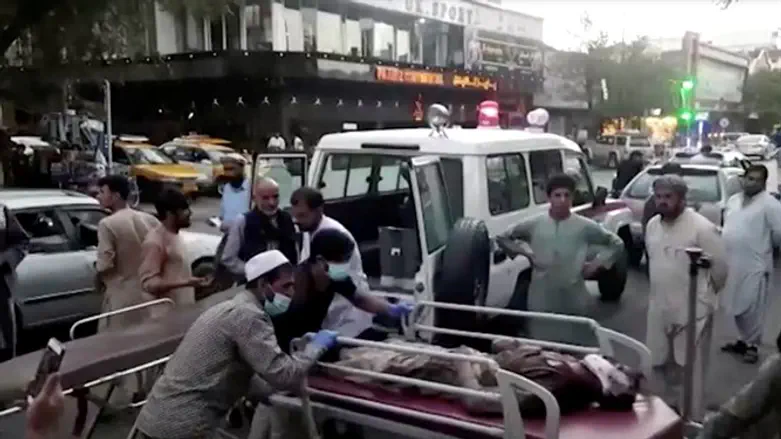
US General Frank McKenzie, head of the US Central Command, told reporters that the Thursday attack on the Kabul, Afghanistan, airport was the result of a "failure."
The suicide attack, which occurred Thursday following warnings by the UK government, left 182 people dead, including at least 13 US troops.
As the US military launches its investigation, questions arise on how the bomber made it through Taliban checkpoints, and why US troops were concentrated in a small space when they knew an attack was imminent.
"It was a failure somewhere," General McKenzie told Reuters. However, he added that troops had "no choice" but to contact with those trying to board evacuation flights, screen them, pat them down, and ensure they did not enter the airport if they posed a threat.
Reuters also quoted US officials who spoke on condition of anonymity and said that conditions for the Kabul attack were set "months in advance."
Those sources told Reuters that the military had been seeking approval to evacuate at-risk Afghans for weeks before the evacuation began. However, slow processing and an inability to secure housing in third countries led to delays. As a result, US troops were on the front lines at the airport gates.
"This didn’t need to happen," a US military official told Reuters. "They didn’t need to die."
Some have criticized US President Joe Biden for evacuating the Bagram military airbase in July, claiming that the evacuation would have been easier if it had remained open. However, Reuters quoted a US defense official, speaking on condition of anonymity, who said that securing Bagram would have required an estimated 8,000 US troops.
Those troops would likely have been attacked by the Taliban, and Americans wanting to leave Kabul would have faced a 40-minute drive through Taliban checkpoints, the source added.
US sources told The New York Times that on the day of the attack, Taliban forces twice pushed back the crowds attempting to reach the airport. The third time, the terrorist was in the crowd, and at 5:48p.m. he approached US soldiers searching those who wanted to enter the airport.
The terrorist was armed with 11 kilograms of explosives - an unusual weight for a suicide belt - hidden under his clothing. When his turn for inspection came, he detonated the explosives, ending his own life and that of over 180 others.